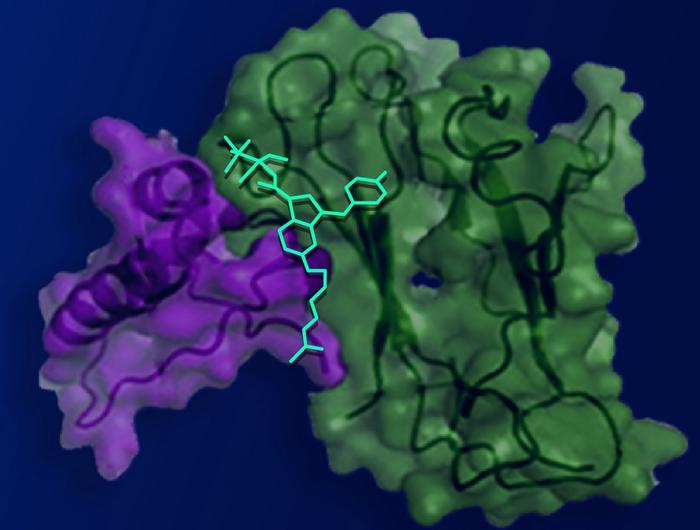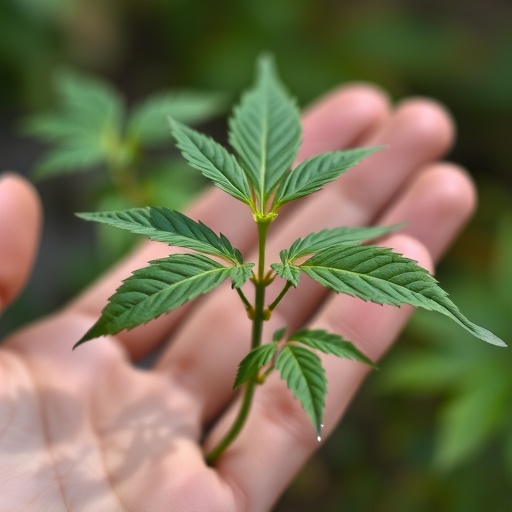In the ongoing battle against chronic pain management, researchers at Washington University School of Medicine in St. Louis and Stanford University have made a significant breakthrough. They have developed a novel compound that offers substantial pain relief in mice without inducing the mind-altering side effects commonly associated with opioid medications. This groundbreaking development seeks to provide a safe alternative to opioids, which have long been criticized for their addictive qualities and the dire risk of overdose.
Chronic pain affects an estimated 50 million individuals in the United States alone, leading to a pressing need for effective, non-addictive treatment options. The current reliance on opioids—substances that dull pain by acting on the brain—presents serious public health concerns. While opioids are effective pain relievers, their high potential for addiction and the risk of overdose deaths have prompted scientists to search for alternatives.
To achieve this objective, the team engineered a cannabinoid molecule that possesses a positive charge, which inherently limits its ability to cross the blood-brain barrier. This barrier serves as a protective shield, preventing the entry of many substances into the brain, and is key to the compound’s design. As a result, this molecule engages cannabinoid receptor one (CB1) found on pain-sensing nerve cells throughout the body, delivering effective pain relief without psychoactive effects.
The efficacy of this modified cannabinoid compound was tested using mouse models for both nerve-injury pain and migraine headaches. Researchers quantified pain through hypersensitivity to touch, a common way to assess pain responses in animal models. Through this approach, they discovered that administering the compound eliminated hypersensitivity, showcasing its effectiveness in managing pain.
A crucial aspect of opioid medications is the issue of tolerance, which can develop over time with continued usage. This often necessitates escalating dosages to achieve previous levels of pain relief, presenting a significant barrier to sustainable pain management. Remarkably, the custom-designed molecule exhibited prolonged pain relief without inducing tolerance in the test mice, even with bi-daily doses administered over nine days.
The unique capability of this compound to bypass tolerance development arises from the sophisticated design process involving computational modeling. Researchers identified a previously overlooked binding site on the CB1 receptor, known as a cryptic pocket. Binding to this hidden pocket allows for reduced cellular activity associated with tolerance, marking a significant advancement in the design of cannabinoid-based pain relievers.
The researchers plan to further refine the compound, intending to develop it into an oral medication suitable for future clinical trials. Should these advancements come to fruition, it could revolutionize the available treatments for chronic pain, addressing an urgent healthcare crisis that affects millions of individuals seeking relief from ongoing discomfort.
The collaboration between Washington University and Stanford signifies a promising intersection of neuroscience, chemistry, and medicine. As researchers work tirelessly to transition this compound from the laboratory to clinical settings, the implications for pain management practices could be profound. The findings not only offer hope for chronic pain sufferers but also pave the way for a broader understanding of how cannabinoids can be utilized therapeutically.
To summarize, this innovative research underscores the urgent need to explore alternatives to opioid medications while promoting safety and efficacy in pain management. By leveraging cutting-edge technology and harnessing the properties of cannabinoids, researchers are advancing the frontiers of pain relief, potentially offering millions a new lease on life free from the specters of addiction and extreme side effects.
This promising development reiterates a pivotal shift in the healthcare paradigm—one that embraces the idea of non-addictive medications, providing practitioners with tools to combat the severe ramifications of chronic pain without perpetuating the cycle of dependency associated with traditional painkillers.
As the scientific community anticipates further breakthroughs, this study represents an essential step forward. With additional research and comprehensive clinical testing, this cannabinoid-inspired compound may soon be a key player in the ongoing revolution of pain management.
Subject of Research: Animals
Article Title: A cryptic pocket in CB1 drives peripheral and functional selectivity
News Publication Date: 5-Mar-2025
Web References: Nature DOI
References: Nature Journal
Image Credits: Tasnia Tarana
Keywords: Chronic pain, Cannabinoids, Opioids, Pain relief, Drug design, Cannabis, Non-addictive treatments.
Tags: breakthrough in pain managementcannabinoids for pain reliefcannabis analgesic compoundcannabis-derived pain medicationchronic pain management alternativesinnovative pain relief researchminimizing opioid side effectsnon-addictive pain relief optionsopioid alternatives for chronic painsafe alternatives to opioidsStanford University pain relief studyWashington University cannabis research





